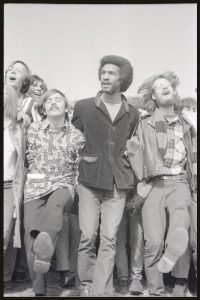AU Archives and Special Collections will be moving to our new home on the second floor of the Spring Valley Building (4801 Massachusetts Avenue NW) the last two weeks of August. We will be monitoring email sporadically during the move so our response time will be slower than usual. Starting September 5, we will provide limited reference service until the rare book collection has been unpacked and shelved. We hope to establish full operations in early October if not sooner.
We will begin accepting donations again starting the week of Labor Day.
Our new mailing address is as follows:
American University
4400 Massachusetts Ave NW
Archives & Special Collections – Suite 207
Washington DC 20016-8042
For FedEX and UPS shipments please use the following address:
American University
4801 Massachusetts Ave NW
Archives & Special Collections – Suite 207
Washington DC 20016-8042
Researchers are welcome to contact us starting the week of September 14 to schedule appointments for late September and early October.
This is a preliminary schedule so please call or email to confirm.

